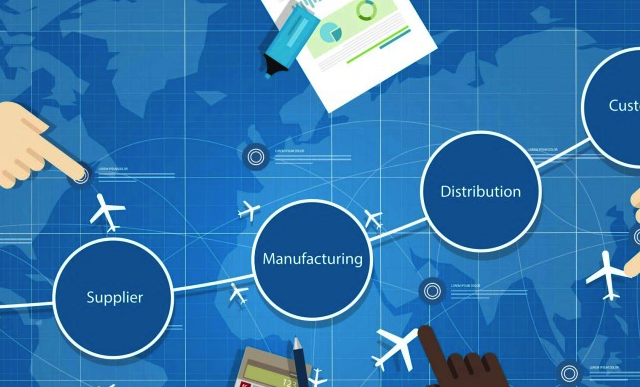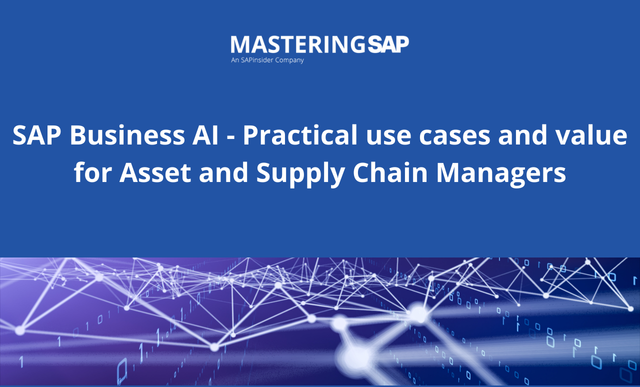Desires Delivered in an Experience Economy: Learn How to Successfully Manage Supply Chains to Improve Customer Experience
by Richard Howells, VP of Marketing, Digital Supply Chain, SAP
We are living in the experience economy, and in this environment, every supply chain starts with a desire. But desires mean different things to different people. For example, a customer desires the perfect order — the right product, delivered to the right place, at the right time. It goes further than just customer desires. Employees have desires. They want to work for ethical and sustainable companies and be empowered with the right tools to make the right decisions to achieve the desired outcomes in their jobs. Shareholders also have desires — to grow profits and generate returns on their investments and to seize new opportunities quickly and identify new ways of doing business more profitably.
Everyone is increasingly concerned with environmental desires. The world will have a population of 10 billion people in only a few decades, and although the Simon Abundance Index shows the world was 379.6 percent more plentiful in 2017 than it was in 1980, we still need to safeguard our planet and its natural resources. We can do this by designing and manufacturing sustainable products using ethically sourced materials and delivered with logistics processes that have minimal environmental impact.
Explore related questions
It All Starts with a Desire
Today’s consumers and customers have been conditioned for instant gratification. They “see it” online. They “like it” on social media. They “want it,” and they want it customizable and ordered with a single click. And they expect to “get it,” if not in the next hour or two, at least within 48 hours.
We’re seeing these expectations in business-to-business (B2B) transactions now as well. B2B organizations need to be responsive to change to satisfy customer demands. More and more, B2B customers expect the availability of mobile ordering from an app, and the customer is king more than ever.
The winners in the experience economy anticipate, know, fulfill, and exceed customer desires in real time to deliver the dream experience, every time.
Again, it goes further than just customer desires though. We see desires through a broader lens. We have desires to change the way we do business, to seize new opportunities quickly, to protect our workers, and to safeguard our precious planet.
The Needs of a State-of-the-Art Digital Supply Chain
Delivering on desires starts with customer-centric business processes. To enable this, you need a true picture of what your customers want, and how they want to consume it. This is not only knowing what they have ordered in the past but predicting what they want in the future. This means that structured data like orders and inventory needs to be augmented with unstructured data such as sentiment analysis and market research. You need to understand when, how, and why customers order products and what they tweet, like, or comment about them on social media. These 360 views can and should feed back into how we design, manufacture, and deliver products.
Organizations need total visibility into all products and assets, across every node of the supply chain. This requires visibility and collaboration with all partners in the supply chain, through multiple tiers of suppliers, contract manufacturers, logistics service providers, and distributors. We also need to design and manufacture smarter connected products and assets that capture and share information to help predict outcomes and improve processes from the design of a product and through its complete life cycle.
Productivity is another key driver of delivering on desires. This includes productivity in manufacturing and warehousing as well as usage and throughput in delivery. Industry 4.0 and the Industrial IoT can change everything by putting data from all of these operations to work.
Finally, organizations can deliver on desires through sustainability. Everybody has an interest in ensuring the planet survives. Therefore, manufacturers need to ethically source products, and customers have shown that they are prepared to pay more for sustainable products.
Closing the Experience Gap
The customer experience gaps are the differences between the perception of the companies and their customers. Almost all companies think they provide great services, but most customers disagree.
My son captained his high school basketball team last year. The week before the season started, he ordered sneakers and customized them with Carolina blue colors and his number and name. He was so excited to press Order, and then the website said he could expect delivery in six weeks. That’s not a great experience. This sneaker company was providing a great online experience but fell flat when it came to delivering on the promise. The season would have been half over before his sneakers arrived.
This example shows that the customer experience is not only about the sales and ordering experience but also about great product, service, and delivery experiences. In fact, customer-centric experiences do not start or end with the ordering experience. Rather, they start with designing customizable products that customers want and go all the way through to delivering high-quality products when, where, and how the customer wants them.
Of course, many industries do not sell products anymore but instead sell services. My children have never ordered DVDs or CDs; in this area today, great customer experience is an on-demand, streaming one. This great experience of streaming movies and music when and where they want is a key driver in getting them (or, in this case, me) to come back and pay the subscription fees every month.
Supply chains combined with the right business model can help improve product quality, ordering, and delivery and close that experience gap.
The Network Effect
But to deliver a great experience often requires a complex global network of suppliers, contract manufacturers, logistics service providers, and other partners. Only when you can bring together data from processes, people, trading partners, as well as the smart products and assets, can you have a true digital twin of your supply network.
Having the right information in the hands of the right people at the right time empowers individuals and creates resilient processes that can respond to shifting conditions, minimize risk, and identify opportunities all the way from design to full-scale deployment and operations.
Leveraging Technology to Drive Industry 4.0
Many companies see technology as a great differentiator and recognize Industry 4.0 as a strategic priority to turn challenges into opportunities. Industry 4.0 technologies empower organizations to automate and deliver using smarter assets and equipment, but Industry 4.0 is more than just intelligent factories. It is evolving from simply capturing real-time data to enabling data-driven business decisions. It’s about designing and manufacturing intelligent products and assets, and empowering employees to leverage the data from these intelligent products and assets to make predictive, prescriptive, and automated decisions across the entire supply chain.
Safeguard the Planet with Sustainable Supply Chains
When Greta Thunberg was named Time’s Person of the Year for 2019, it highlighted the influence and power that individuals in particular, and consumers in general, have on businesses today. As the world’s population grows, and the natural resources decline, we are challenged to minimize waste and recycle products and materials as they come to their end of life. We, as customers, are increasingly demanding sustainably sourced products that are manufactured and delivered through sustainable processes from sustainable companies.
This means designing products that are biodegradable and environmentally sustainable. Sourcing materials ethically from organizations that follow social and humanitarian practices. Manufacturing with minimal waste and environmental impact. Delivering with logistics processes that optimize loads to reduce mileage, emissions, and carbon footprint. And operating assets and equipment in an energy-efficient manner that is safe for the environment and workforce.
Solving Problems
The key to get started is to identify the biggest opportunities and know what information you need to improve business opportunities and solve problems in your supply chain. Focus on fulfilling customer, employee, shareholder, and other stakeholder desires and then leverage solutions and technology with this end in mind.




